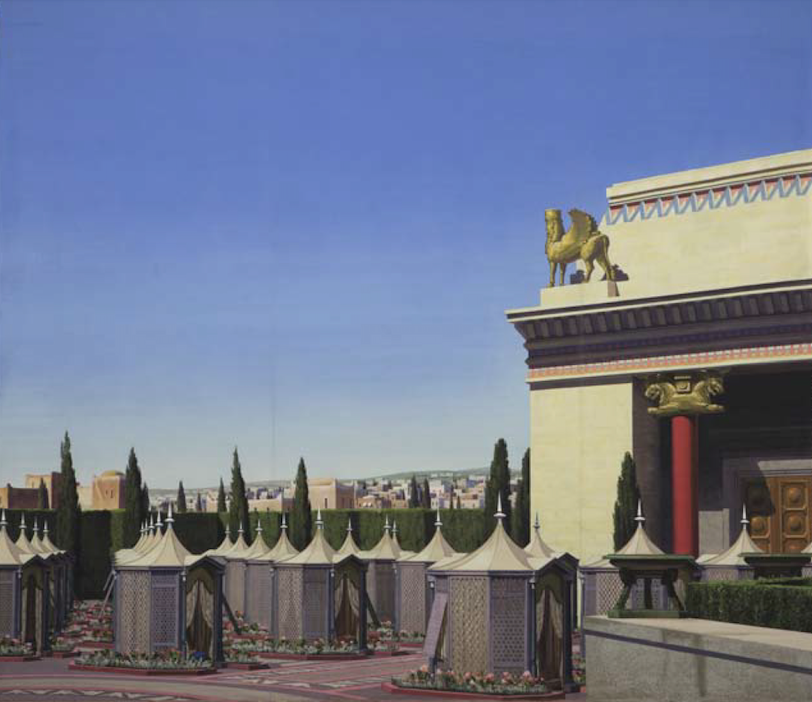We love a live action play or musical, don’t you? With theater, it has indeed shape-shifted, like the rest of the world...due to the pandemic. The future is bright, though, according to the University of Texas’s Bass Hall and Texas Performing Arts’ Executive Director, Bob Bursey, who weighs in with his point of view on the performing arts.
LAM: Bob, thanks for your time to connect about theater. Why is Bass Concert Hall at UT such a special place for performances, in your opinion?
BB: It’s the largest theater in Austin, and for 40 years has been the Austin home for top artists and productions from around the world. The scale of it is breathtaking, and that allows artists to go big.
LAM: The show must go on. That in mind, with the pandemic, how has TPA adapted and pivoted with its online presence and a new exhibit like Behind the Scenes: The Art of the Hollywood Backdrop?
BB: We’re staying true to our purpose of connecting people with creativity, especially in these times. We’ve been finding the opportunities in the pandemic through projects that wouldn’t otherwise be possible, like using the Bass Concert Hall stage as an exhibition space for the Hollywood Backdrops show.
LAM: Why is an exhibition like this so important about telling a more complete story about the theatre?
BB: Theater and filmmaking both rely on the work of many, many people behind the scenes. These are extraordinary artists in their own right, though you never see them on-stage or screen, and sometimes they’re not even credited. This exhibition celebrates some of those artisans and their work.
LAM: What do you want a visitor to experience when they see this exhibit?
BB: To be transported out of day-to-day life during these long months. It’s an opportunity to take a trip to a Golden Age Hollywood backlot without leaving Austin.
LAM: How important is it for UT to have an organization like Texas Performing Arts?
BB: Having a leading performing art presenting and producing program is part of what makes the University of Texas at Austin a flagship school. The university’s commitments to excellence and to research extends to the arts. Artists develop new projects here, and we provide UT students with hands-on, real-world experiences that further them toward becoming the next generation of creative leaders.
LAM: Texas Performing Arts will soon celebrate its 40th anniversary–congratulations on that. That’s a major milestone–what does that represent for the future of the venue?
BB: We’re excited about the next forty years. We’re always improving the facility itself of course, and even more important than that are the opportunities to welcome new artists and audiences, as well as creating opportunities to connect with artists and performances beyond the walls of our building.
LAM: What can we expect to see with the next season (2021-2022) of performances?
BB: That will be our 40th anniversary season, so you can expect the return of remarkable artists who have been favorites in Austin over the years. That will be balanced with new voices—the emerging generation of performing arts is extraordinary, and we want Austin to see them first.
LAM: How important are the “road” shows of Broadway hits that are brought to our culture–it seems that Hollywood has returned to The Great White Way for its creative inspiration–unprecedented since the 60s.
BB: That’s exactly right—TV and film are drawing heavily on shows and talent from the theater world. Our silver linings of the pandemic is that the performing arts world is getting more comfortable with putting productions on screen, and is finding that it makes the live experience even more special.
LAM: What are other types of performances on the horizon, beyond the Broadway Across America productions?
BB: Our next season will include some of America’s leading dance, theater, and music artists and ensembles. We’re putting more emphasis on big dance and theater projects—the sorts of ambitious productions that we’re uniquely positioned to take on because of our facility and the spirit of UT. Some of the most exciting music being made now is coming from unexpected collaborations between different artists, so that will be a focus as well.
LAM: Regarding your role, what are some of your key objectives with the future of TPA?
BB: I want the artists and productions on our stages to reflect the broadest possible view of what Texas is in 2021—a big, diverse, forward-looking state. We’re planning to create more new projects here. UT is about changing the world for the better through research and learning, and that’s the objective for Texas Performing Arts through our creative development programs and what we can do for students of every age.

